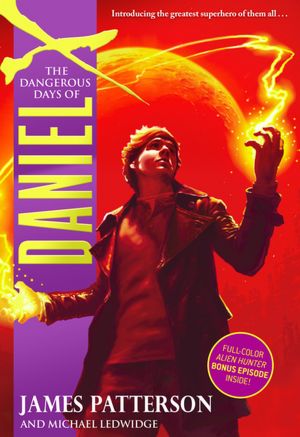Are teens still "developing readers"? Yes.
Rick Riordan kicked off an extremely popular series with
The Lightning Thief. Whatever critics might say, the truth remains that kids love his books. He may not always provide the funniest jokes, but you can find him offering at least one joke on nearly every page. Riordan spent years teaching teens. When I read his stories, I sense an author that truly understands how to keep adolescent brains tickled and turning pages.
Let's forget questions of entertainment and just think about the concept of
working memory.
Working memory is related to, but not the same as, short-term memory. I think of working memory as the cognitive workbench where we sort, chunk, analyze, and classify information in the short-term.
Find somebody to challenge.
"I'm going to ask questions based on these letters & number pairs. 9-W, 3-T."
Ask: "What are the 2 letters?"
Ask: "What are the 2 numbers?"
Ask: "Can you list the letters in alphabetical order?"
Ask: "What are the original 2 pairs?"
Did they struggle? Depending on their ability to visualize the original pairings, they may not reach a saturation point as they "work" with the bits of information from different angles.
"7-D, 4-R, 2-Y, 6-E."
Ask: "What are the 4 letters?"
Ask: "What are the 4 numbers?"
Ask: "Can you repeat the letters in alphabetical?"
Ask: "What are the original 4 pairs?"
3. Push them to their saturation limit and then have them challenge you!
Do you see how sorting and wrestling with even small amounts of information can become extremely taxing on our working memories?
Feel the frustration? This is what basic reading is often like for many students. Adolescents are still developing, cognitively.
What might this mean for writing?
I think we remember the stuff most directly tied to emotion and conflict, but how do we know when we've gone too far with detail?
What types of information saturate the brain the most?
Developing readers struggle to keep track of who, where, why, and whatever. I remember Kate Garnett (Hunter College) talking about
anaphora as a primary reading challenge for adolescent students. Combine this with working memory issues, and we can easily see how average readers get lost within many stories. They yawn and tap out.
In the most simple terms, writing that relies on lots of antecedents and contextual references can lose readers. When I look at popular stories with middle-grade students, I don't see "dumbed down" writing. I see writing that fully engages their hearts and minds.
Isn't that the optimal way for them to make progress as independent readers? Do we want them to passionately read?
You know that deep, metaphoric passage we study in school? It just made our 13 year-old reader put the book down. He's dreaming about this girl in his class. Now he just flipped on the television to enjoy 5th-generation MTV programming about teen girls who play video games. Good luck getting him back to your deep inferences! Do you want him as a reader? I do.
When it comes to managing anaphora and working memory, here's my current approach:
• Slice my scenes up into smaller, focused, pre-chunked scenes.
• That. Which. I shall use them (i.e. keep the relative pronoun unless it's vernacular).
• Chunk paragraphs carefully. Don't cross the antecedent beams in massive paragraphs with multiple subjects and glorious relative clauses set upon prepositional phrases dancing around whatever I'm trying to actually say.
• Do not rely on complex inferences in order to understand the story. However, I believe developing readers enjoy inferences when loaded inside humor or strong emotional moments.
• Boil down my exposition, connecting revealed information with conflict & emotion.
• Use a comical simile rather than the lyrical metaphor that I think is so incredibly awesome.
• Reinforce new ideas & information with context clues or repetition. Keep it moving.
• Punch the important information with conflict, emotion, or dramatic conventions.
That's an approach, not a set of hard rules. I hope I'm heading in the right direction!
 I began explaining to my student that this might... you know... be a different genre than COMEDY. She vehemently disagreed. I explained that - while there may be humorous elements - the overall story wasn't a comedy. This was a TRAGEDY. In fact, it was quite depressing and required catharsis! Resolution! The girl held her ground and insisted it was a COMEDY.
I began explaining to my student that this might... you know... be a different genre than COMEDY. She vehemently disagreed. I explained that - while there may be humorous elements - the overall story wasn't a comedy. This was a TRAGEDY. In fact, it was quite depressing and required catharsis! Resolution! The girl held her ground and insisted it was a COMEDY.












